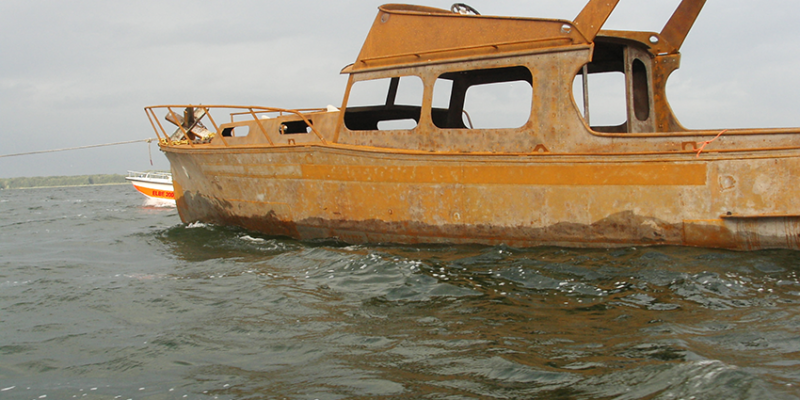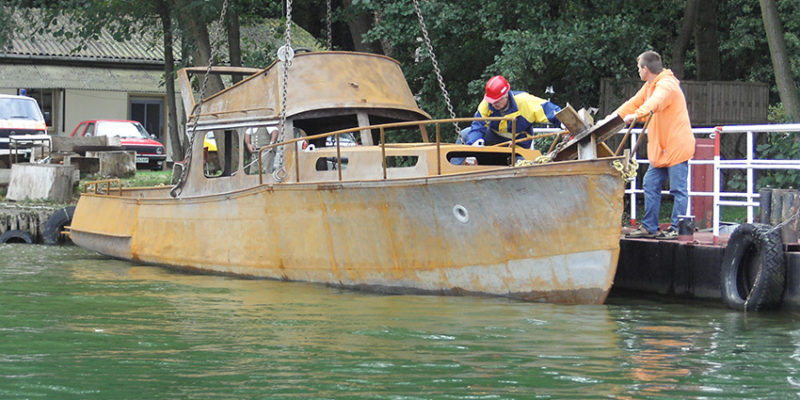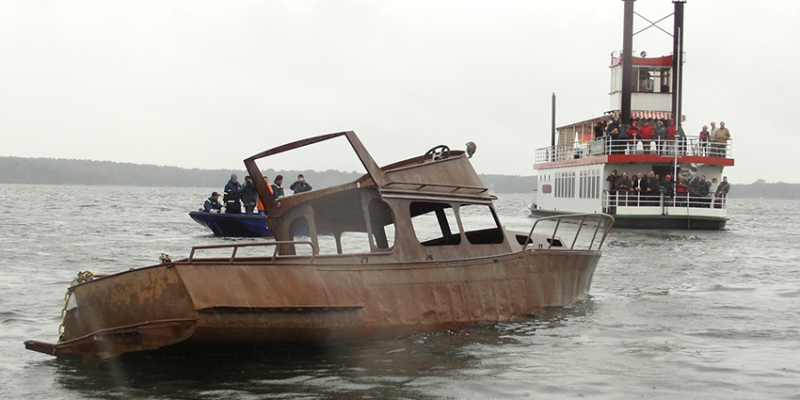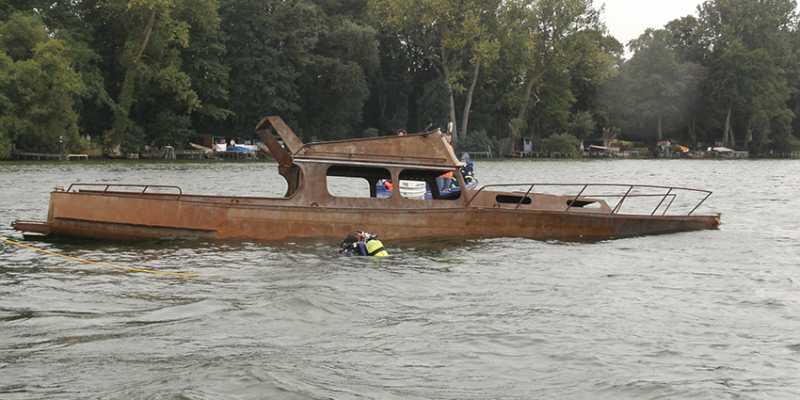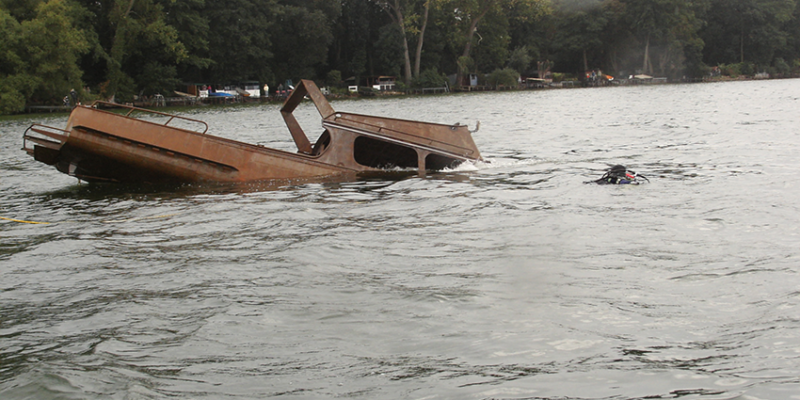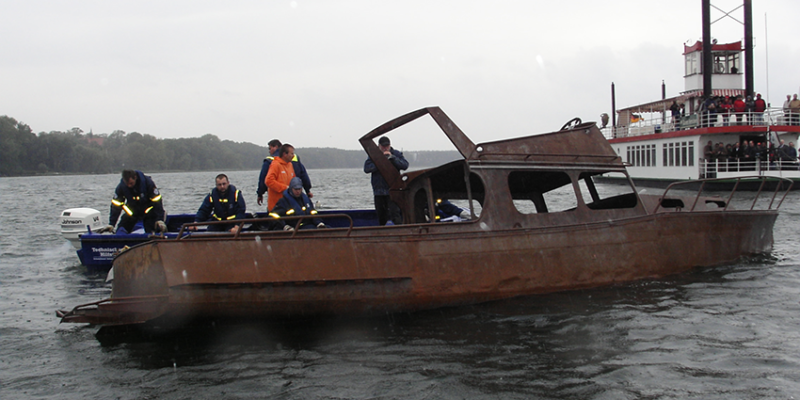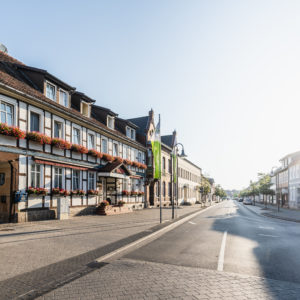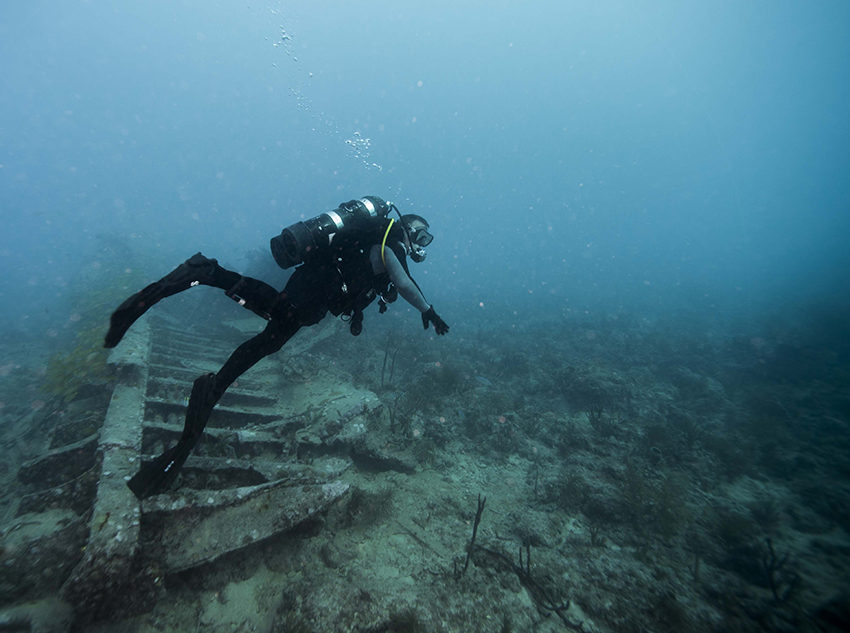
09 Apr Dive into the shipwreck in the Arendsee
In the Arendsee in Saxony-Anhalt, a sunk patrol boat from GDR times has been a popular destination for divers for almost 15 years.
Gloriously glittering in the sun, it lies there: the Arendsee. With over five square kilometers, it is Saxony-Anhalt’s largest natural lake. The “Pearl of the Altmark”, as the body of water is also called, is an Eldorado for vacationers. They come for swimming, fishing, sailing, surfing or stand-up paddling. You can take boat trips across the lake on the Queen Arendsee, a paddle steamer that operates on the Mississippi. A vacation paradise.
But it gets particularly exciting under the surface of the water. At a depth of 20 meters, near the climatic health resort Arendsee, there is a former patrol boat from GDR times. The shipwreck was sunk in the lake in 2006 and has been an interesting destination for divers ever since. “The boat lies flat on firm ground,” explains Burghard Bannier from the Flair Hotel Deutsches Haus in Arendsee. He once had the idea of sinking the NVA boat for divers in the lake. It’s about 3.5 by 12 meters, and divers can still see the interior. “Everything is as it was when the patrol boat was still on the Elbe,” says Burghard Bannier. The boat once had the task of guarding the inner-German border on the Elbe. “In addition to the hull, there is also the steering wheel on the roof of the cabin, searchlights, marker lights, part of the cardan shaft, frame of the stern outboard platform, flood valves for sinking and bow railing,” writes a diver on the website poseidon-dive-sports.de.
“I heard about something like this off the east coast of England around 15 years ago and I really wanted to do it here too,” says Burghard Bannier of the beginning. His enthusiasm can still be seen today. The hotelier, who owns a diving license, drove the project forward together with the local tourism association. The state of Saxony-Anhalt, as the owner of the lake, gave its approval and provided financial support. “We quickly found the empty patrol boat, acquired it and prepared it technically,” explains Burghard Bannier. “That was the biggest job.” The fluids had to be drained and the paint had to be completely removed by sandblasting. “So that the environmental agency could go with it.” On the former “Republic Day”, on October 7th, the wreck was finally sunk. “That was a spectacular event,” enthuses the hotelier. A huge crane had to lift the patrol boat over the poplars on the bank and set it down on the lake. Many onlookers attended the spectacle. It was a small folk festival.
But not everyone was enthusiastic about the project at the time. “Some people vehemently opposed it at the beginning,” recalls Bannier. There were fears that the foreign body in the lake could disturb the ecological balance. That has changed in the meantime. “In the meantime, many people think it’s good that we have this sporting opportunity,” he says. And the wreck has integrated well into nature. Not only is it a refuge for many young fish, but also home to larger fish that have chosen the boat as their home. The lake is home to pike, perch, eel, roach, whitefish and carp.
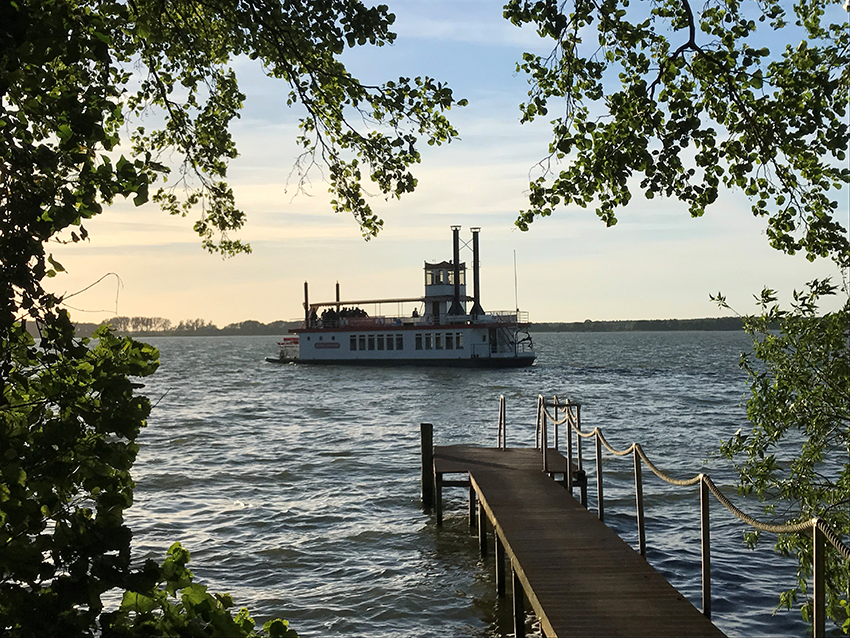
Those who want to dive to the wreck can find the exact coordinates on the internet or on display boards on site. The best thing to do, however, is to contact Burghard Bannier or the Flair Hotel Deutsches Haus in Arendsee. The hotel has its own boat dock, from there the wreck is only about 200 meters away. A diving school from Lower Saxony goes weekly from there to the bottom of the lake, they also look after the wreck. “We are happy to put you in touch with the diving school,” says Bannier. Then you can safely dive into the lake with a local partner from the Flair Hotel Deutsches Haus.
Not only because of the wreck, the Arendsee is also otherwise interesting for divers. The oval lake is up to 50 meters deep, there are steep walls and terraced slopes on which there is a lot to see. There are also other sunk objects in the lake, including a bicycle, a moped and a treasure chest. The visibility is usually around two meters. But it can change quickly, sometimes from one day to the next. Everything is possible from virtually zero to eight meters. “In winter the view is usually clearer,” knows Burghard Bannier.


